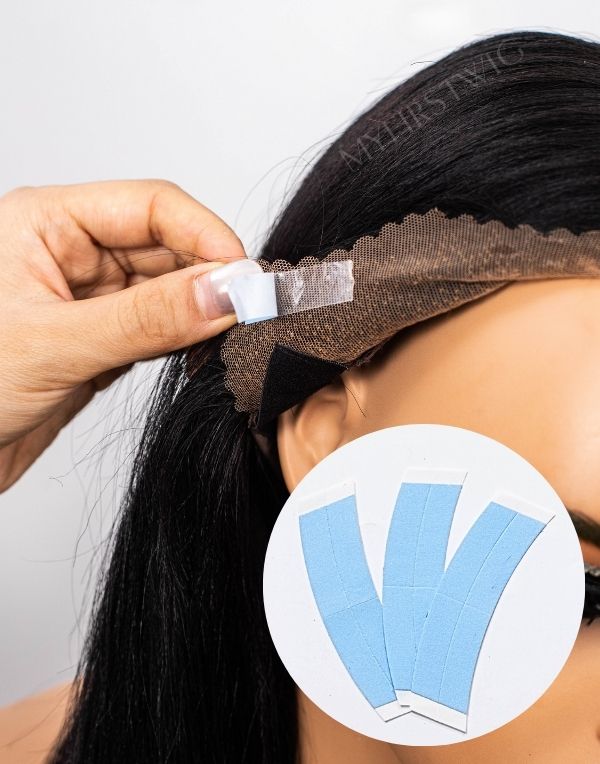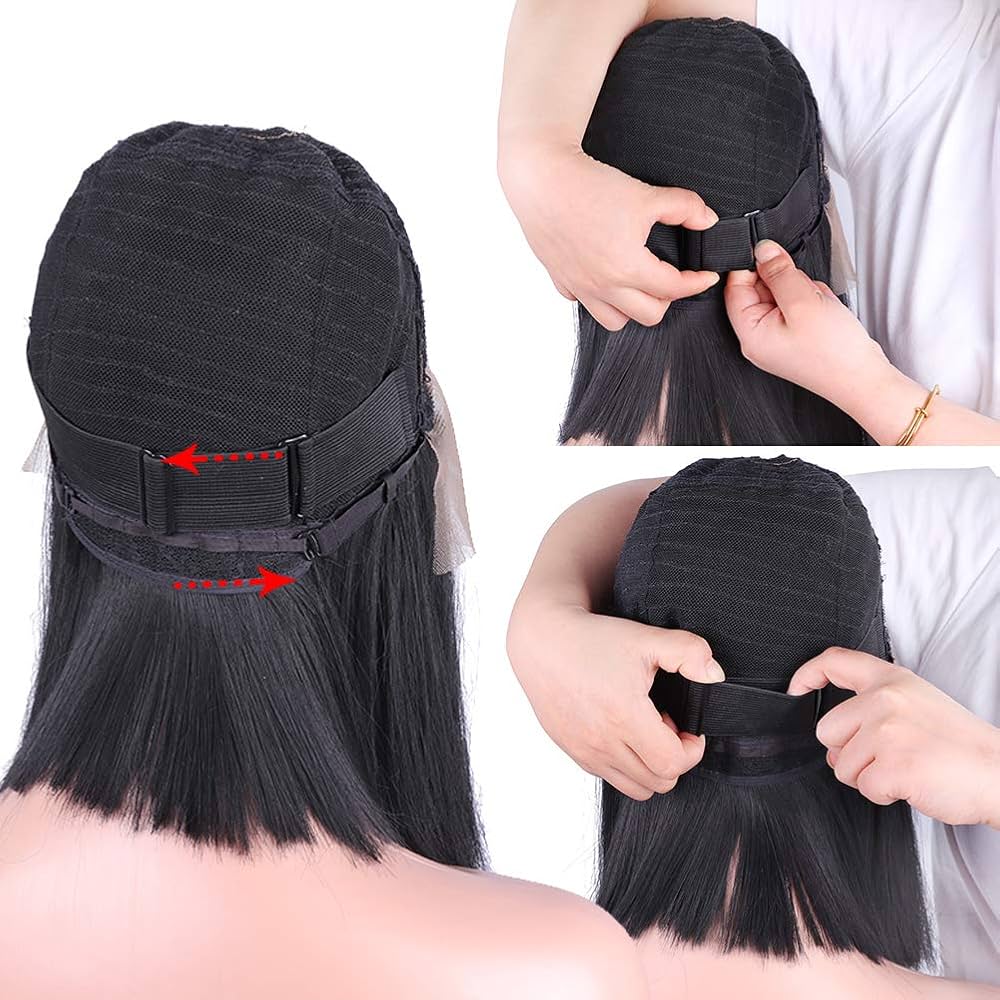Hair Knowledge
Tape vs Glue vs Elastic Band: Wig Installation Method Compared
Choosing the right wig installation method can make or break your overall wig experience. While the wig itself determines your style and confidence, the way you install it impacts comfort, security, and how natural it looks.
The three most popular methods are tape, glue, and elastic band wig installs. Each comes with its own advantages and drawbacks, making them suitable for different occasions, lifestyles, and hair types.
In this guide, we’ll compare tape vs glue vs elastic band so you can decide the best way to install a wig for your needs.
I. Tape Wig Installation
How It Works:
Tape wig installation uses double-sided adhesive strips designed for lace wigs. You apply the tape to the lace perimeter, then press it onto the skin or wig cap. The adhesive bonds quickly and provides a secure hold. Unlike glue, tape is easier to control and less messy.
Pros:
-
Gentle on skin and hair: The adhesive tape is less aggressive than glue, making it ideal for people with sensitive skin or those concerned about hairline damage.
-
Quick application and removal: You can install or remove a tape wig in under 10 minutes, which makes it perfect for beginners or those who change styles often.
-
Natural appearance: Good-quality wig tape provides a flat, seamless finish, blending the lace into your skin.
Cons:
-
Short wear duration: Wig tape typically lasts 1–2 days, so it’s not suitable for long-term wear.
-
Heat and humidity issues: Sweating or humid climates can weaken the tape, making it less reliable in summer or during workouts.
-
Skin irritation risk: Some users may experience mild redness or itching after prolonged tape use.
Best For:
People looking for a temporary, skin-friendly solution, such as wearing wigs for a weekend event, photoshoot, or casual daily wear without long-term commitment.
💡 Pro Tip: If you have oily skin, clean your hairline with alcohol before applying tape to improve adhesion.
II. Glue Wig Installation

How It Works:
Glue wig installation is the most common method for lace wigs, especially lace front and full lace wigs. A thin layer of adhesive is applied along the hairline or wig cap, then the lace is pressed down until it bonds securely. High-quality lace glue can keep a wig in place for 1–2 weeks with proper care.
Pros:
-
Strong and long-lasting hold: Provides the most secure fit, making it ideal for active lifestyles or long wear.
-
Seamless finish: When done correctly, glue melts the lace into the scalp, giving an undetectable hairline.
-
Confidence booster: With glue, you don’t have to worry about your wig shifting or lifting throughout the day.
Cons:
-
Potential damage: Improper removal can pull out baby hairs or damage natural edges.
-
Skill required: Applying glue evenly without clumps or residue takes practice, especially for beginners.
-
Not skin-friendly: Some adhesives contain chemicals that may irritate sensitive skin or cause allergic reactions.
Best For:
Those who want the most natural-looking and durable wig installation method — especially for weddings, performances, or professional appearances where a flawless look is non-negotiable.
💡 Pro Tip: Always use a lace glue remover (not just alcohol) to safely dissolve adhesive and protect your natural hairline.
III. Elastic Band Wig Installation
How It Works:
Elastic band wig install involves sewing or attaching an adjustable elastic strap inside the wig cap. The band goes around the back of the head, pulling the lace flat against the skin without adhesives. Many modern wigs come pre-installed with elastic bands, making this method fast and beginner-friendly.
Pros:
-
Completely glue-free: No chemicals, no mess, and no risk of skin irritation.
-
Protective for natural hair: Since there’s no adhesive, your natural edges remain safe.
-
Convenient and reusable: Simply slip on and adjust — installation takes less than 5 minutes.
Cons:
-
Less invisible finish: Without glue or tape, the lace may not fully “melt” into the skin, so the hairline could look slightly less natural.
-
Security depends on fit: If the band is too loose, the wig may shift. If too tight, it can cause discomfort or headaches.
-
Limited wear duration: Best suited for short daily wear rather than long-term hold.
Best For:
Beginners, those with sensitive skin, or wig wearers who value comfort and easy application. Perfect for casual daily use, workouts, or when you need to take your wig off quickly at night.
💡 Pro Tip: Pair the elastic band with wig clips or combs for extra security, especially if you have a busy or active lifestyle.
Side-by-Side Comparison
| Feature | Tape | Glue | Elastic Band |
|---|---|---|---|
| Hold Duration | 1–3 days | 1–2 weeks | Daily wear |
| Natural Look | Good | Best | Moderate |
| Skin Safety | Gentle | Risk of irritation | Very safe |
| Ease of Use | Beginner-friendly | Advanced | Beginner-friendly |
| Best For | Short-term wear | Long-term security | Everyday comfort |
Conclusion
There’s no one-size-fits-all when it comes to wig installation method. If you prioritize natural looks and long hold, glue is the way to go. For flexibility and skin safety, tape is a great choice. If you want the simplest, most beginner-friendly approach, elastic bands are unbeatable.
Choosing the right method ensures your wig not only looks stunning but also feels secure and comfortable — giving you confidence for every occasion.







